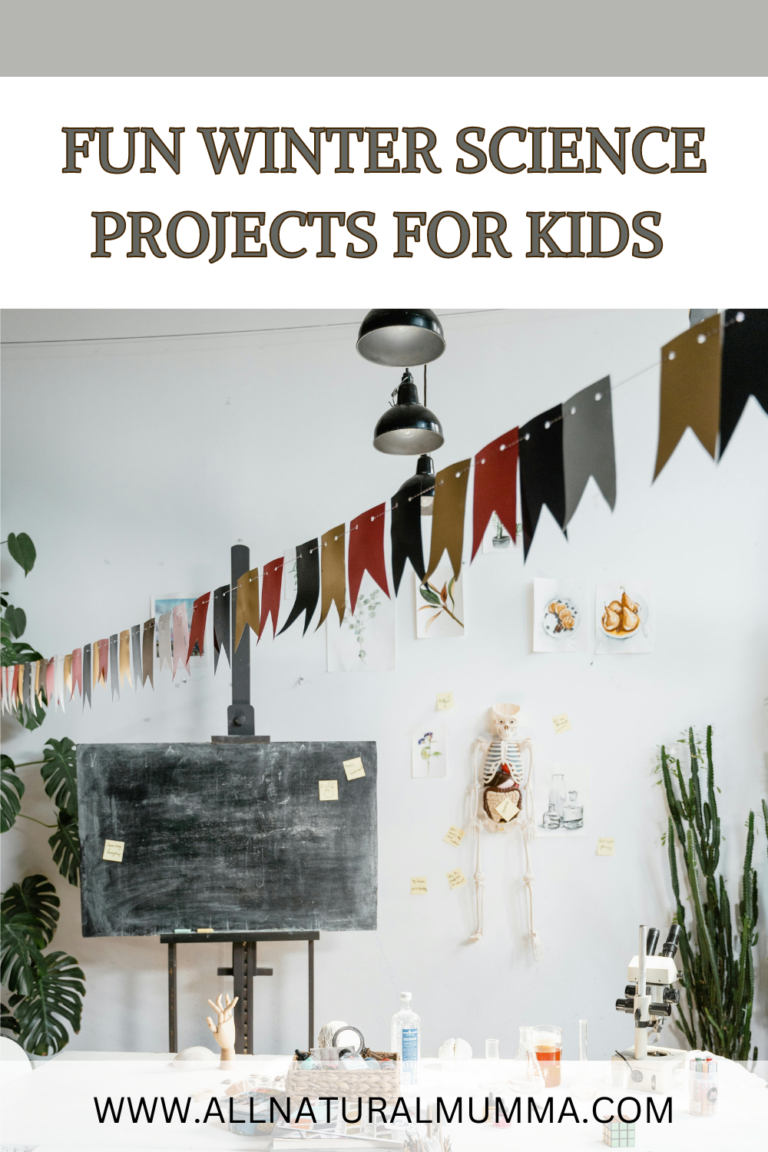Winter is a magical time to engage your children in hands-on learning through science experiments. For mothers who embrace a natural lifestyle and prefer a holistic approach to education, these winter science projects are perfect. They not only stimulate curiosity and creativity but also foster a deeper connection with the natural world. Here are some easy and fun winter science experiments to enjoy with your kids.
ICE LANTERNS
Ice lanterns are a beautiful way to explore the science of freezing and melting while creating stunning decorations for your home.
Materials:
- Balloons
- Water
- Food colouring (optional)
- Tea light candles
Instructions:
- Fill balloons with water and a few drops of food colouring if desired.
- Tie the balloons and place them outside or in your freezer until they are completely frozen.
- Once frozen, cut and remove the balloon to reveal the ice.
- Place a tea light candle inside the ice lantern and enjoy the magical glow.
Science Behind It:
Discuss the freezing point of water and how ice forms. You can also talk about how temperature affects the state of matter.
SNOW VOLCANO
Combine the excitement of a classic baking soda and vinegar volcano with the magic of snow for a winter twist.
Materials:
- Baking soda
- Vinegar
- Food colouring (optional)
- Snow
- A small container (like a plastic cup)
Instructions:
- Build a mound of snow around the small container to create a volcano shape.
- Fill the container with baking soda and a few drops of food colouring.
- Pour vinegar into the container and watch the eruption!
Science Behind It:
Explain the chemical reaction between baking soda (a base) and vinegar (an acid) that produces carbon dioxide gas, causing the eruption.
FROZEN BUBBLES
Blowing bubbles is a year-round favourite, but in winter, they can transform into beautiful, fragile ice bubbles.
Materials:
- Bubble solution (store-bought or homemade with water and dish soap)
- Bubble wand
- Freezing temperatures
Instructions:
- Head outside on a very cold day (preferably below freezing).
- Blow bubbles and watch as they freeze in the air or on the ground.
- Observe the delicate ice crystals that form on the surface of the bubbles.
Science Behind It:
Discuss how the freezing temperatures cause the water in the bubble solution to freeze, creating ice bubbles. This is a great way to learn about states of matter and temperature.
CRYSTAL SNOWFLAKES
Create your own sparkly crystal snowflakes using simple household materials.
Materials:
- Borax
- Hot water
- Pipe cleaners
- String
- A pencil
- A jar
Instructions:
- Twist pipe cleaners into snowflake shapes.
- Tie a string to one end of the snowflake and the other end to a pencil.
- Dissolve borax in hot water (about 3 tablespoons per cup of water) and pour into the jar.
- Hang the snowflake in the jar, ensuring it doesn’t touch the sides or bottom.
- Leave it overnight and watch crystals form on the pipe cleaner.
Science Behind It:
Talk about how the borax solution becomes supersaturated, and as it cools, the borax molecules start to crystallize on the pipe cleaners.
SALT AND ICE EXPERIMENT
Explore how salt affects the freezing point of water with this simple and fascinating experiment.
Materials:
- Ice cubes
- Salt
- String
Instructions:
- Place a few ice cubes on a plate.
- Sprinkle salt over the ice cubes.
- Lay a piece of string over the salted ice cubes and wait a few minutes.
- Lift the string and see how it sticks to the ice!
Science Behind It:
Explain that salt lowers the freezing point of water, causing the ice to melt slightly. The water refreezes around the string, creating a bond.
These winter science experiments are not only fun and educational but also align with a natural, holistic approach to learning. They encourage children to explore the world around them, ask questions, and develop a love for science. Create lasting memories with your little ones while nurturing their curiosity and creativity.
Let me know if you try any of these experiments!


